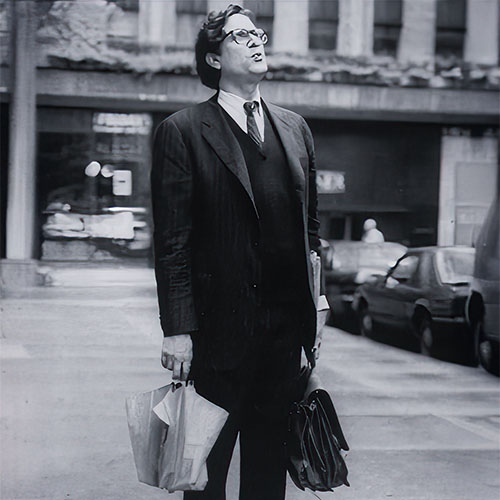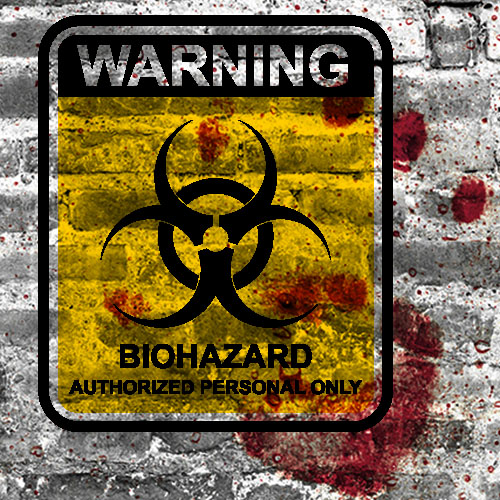For more than 20 years, Dr. Joseph Gold, director of the Syracuse Cancer Research Institute, has waged a lonely battle on behalf of hydrazine sulfate, a common drug that slowly — ever so slowly — has gained grudging acceptance as an anti-cancer treatment.
Looking for Magic as a Last Resort
Hydrazine sulfate’s chief asset is its ability to combat cachexia, the wasting away process that reduces late-stage cancer and AIDS victims to little more than skin and bones. The majority of such patients don’t actually die of either disease. Instead they succumb to other illnesses they’d otherwise survive if not for their emaciated state.
Hydrazine sulfate’s most controversial aspect is its documented power to sometimes either stop the growth of malignant tumors, reduce their size, or cause them to disappear. No hedging here. A growing number of cancer patients diagnosed as terminal by their oncologists have experienced complete remissions through the use of hydrazine sulfate.
“In many ways, I think hydrazine sulfate is a magic bullet,” Gold says. “It’s the only drug we know of that affects every type of tumor at every stage, and it also interacts well with chemotherapy and radiation.” If that seems like hyperbole, it’s not. If it seems like contraband knowledge, it is. Until quite recently, the National Cancer Institute regarded Gold’s work with hydrazine sulfate as either invalid or insignificant. With a budget of $1.4 billion a year, the N.C.I. has a near monopoly on the war against cancer. (The American Cancer Society’s annual budget is only $331.5 million.)
Last year Dr. Vincent T. DeVita, Jr., then director of the N.C.I., finally explained his long-standing opposition to hydrazine sulfate: “You have to distinguish between good ideas and bad ideas and ho-hum ideas. And hydrazine, I think, is a ho-hum idea,” he told a reporter for The Washington Post. “The key thing is not to prevent people from losing weight while they die; the key thing is to get rid of their cancer, and that was always the issue. The trouble was, nobody saw the value of pumping a lot of resources into a therapy that gave you plumper people by the time they died.”
Despite the insensitivity of those remarks, DeVita, now the No. 2 man at New York’s Memorial Sloan-Kettering Cancer Center, says he stands by them. If hydrazine sulfate can buy time — quality time — for cachexic patients, it apparently cuts no ice with him. Increasingly, however, the man who almost single-handedly shaped U.S. cancer-research policy during the 1980’s now finds himself alone in his assessment of hydrazine sulfate.
DeVita was succeeded at N.C.I. last January by Dr. Samuel Broder, who pioneered the use of AZT in treating AIDS. It may or may not be coincidental, but with DeVita gone, the N.C.I. this year will sponsor a phase-three multi-institutional study of hydrazine sulfate on lung cancer patients. A phase-three study of any drug is extensive, expensive, and attention-getting. Although the N.C.I. funds several such trials each year, none is devoted to ho-hum ideas. Says Dr. Michael Friedman, associate director of N.C.l.’s Cancer Therapy Evaluation Program, “We find hydrazine sulfate to be sufficiently interesting and provocative to warrant further and full study.”
Additionally, the National Institutes of Health have underwritten a five-year study of hydrazine sulfate’s effect on AIDS. Joe Gold’s phone has been ringing a lot lately, for a number of hospitals and organizations are now planning to test hydrazine sulfate’s impact on cancer or AIDS. Why all this sudden activity in support of an inexpensive drug — 20 cents a dose — that ten years ago was classified as a quack cure by the American Cancer Society?
A quick answer would be to point to the work of Dr. Rowan T. Chlebowski, associate professor of medicine at U.C.L.A.’s Harbor Medical Center. Since 1982, Chlebowski has completed three double-blind studies (neither the doctors nor the patients knew who was getting hydrazine sulfate or a sugar pill) of the drug’s effects on cancer patients. The February 1987 Cancer, the journal of the American Cancer Society, publicized the results of a one-month hydrazine-sulfate trial that involved 101 cachexic cancer patients who received nutritional counseling from Chlebowski and his associates. The results raised eyebrows: 83 percent of patients treated with hydrazine sulfate maintained or increased their weight, as opposed to only 53 percent of patients on placebos.
If that seemed like an important breakthrough in the U.S., it wasn’t anything new back in the U.S.S.R. The Russians have been following Gold’s research and testing hydrazine sulfate themselves since the early 1970’s. In a 1983 summary of a study conducted on 356 late-stage cancer patients at Leningrad’s Petrov Research Institute, a team of physicians headed by Dr. M. L. Gershanovich reported that hydrazine sulfate caused anti-tumor responses in 52 patients, while another 111 had their tumors stabilized. Anticachexia responses were observed in 177 of the subjects.
Yet despite the growing validation of his work, Gold himself has been frozen out of every major study of hydrazine sulfate. His anonymity, however, may be coming to an end.
Born in Binghamton, New York, Gold, now 59, graduated from Cornell University in 1952, then spent four years at the State University of New York Upstate Medical Center at Syracuse. After receiving his medical degree, Gold won a two-year U.S. Public Health Service research fellowship to the University of California School of Medicine at Berkeley. There he devoted himself to studying the metabolic relationship between cancer cells and normal cells.
In many of his experiments, Gold used a chemical called glyceraldehyde phosphate, which at the time was expensive and difficult to procure. When it was available, the manufacturer couldn’t guarantee its purity or stability. In the course of one week, Gold devised a new way to synthesize the compound, and the glyceraldehyde phosphate he produced was completely stable — the purest ever manufactured. Overnight, the price of the drug dropped from $700 to $30 a gram. Gold was issued a patent, which he later sold to a bio-chemical firm.
Upon leaving Berkeley, Gold fulfilled his Air Force R.O.T.C. obligation. He was commissioned as a captain in 1958 and sent to Wright Field in Dayton, Ohio, headquarters of the Project Mercury program. Gold was put in charge of devising and supervising heat-stress tests for the project’s final 31 astronaut candidates. He ultimately, had about 20-percent say in choosing America’s first seven astronauts. In 1960, Gold’s first work on thermal stress was published as a lead article in the Journal of the American Medical Association. The following year he wrote another paper on the subject for the Journal of Applied Physiology. By the time he was mustered out of the Air Force in 1961, Gold had solidly established his credentials as a scientist.
He then returned to the Upstate Medical Center (now the Health Science Center) in Syracuse where until 1965 he was a faculty member, spending his time on cancer research. At the start of 1966, Gold, who doesn’t lack nerve, founded the Syracuse Cancer Research Institute. His initial research was aimed at the study of glycolysis — the conversion of glucose to lactic acid — in human colon cancers.
In the 1920’s, Germany’s Otto Warburg, a Nobel Prize-winning biochemist, showed that cancer cells glycolize (use sugar) ten to 15 times more than do normal cells. As a result of that finding, cancer researchers (including Gold) viewed glycolysis as the primary cause of — and the main source of energy for — tumor growth.
One night a few months after establishing the institute, Gold read a 1963 lecture delivered in London by Dr. Hans Krebs on the subject of gluconeogenesis. (You knew we’d have to encounter the actual science involved here, but it will be brief, so hang in.) This is the process by which the liver recycles the lactic acid produced by glycolysis into glucose. The glucose is then consumed in ever-increasing amounts (glycolysis again) by cancer cells.
“While reading the Krebs lecture,” Gold recalls, “it suddenly dawned on me that if you could find a way to inhibit gluconeogenesis — the production of excess amounts of glucose and the energy drain attendant on that — cancer cells would have less glucose to feed on, and normal cells would stop starving themselves and actually dissolving to feed growing tumors. It was a sudden, lightning-like insight. Within the next month I hurriedly laid out my findings to scientists from Syracuse and elsewhere, including the editor of the Journal of the American Medical Association. They all thought I was crazy.”
Gold spent the next few months carefully crafting his theory. Apparently mistaking his heavily referenced manuscript to be a review paper of existing literature on cachexia, the editors of the Journal of the National Cancer Institute and the International Journal of Cancer rejected Gold’s paper. Finally, in 1968, Oncology, an international cancer-research journal that originates in Switzerland, published Gold’s “Proposed Treatment of Cancer by Inhibition of Gluconeogenesis.”
Joe Gold is both a genuine healer and a genuine hero. Unfortunately, he seems to be standing alone in the midst of killer bees.
“I thought my findings would explode on the medical community like a bombshell, but the silence was deafening,” Gold says. “It was very clear to me that if you could stop or reverse cachexia, you’ve done an awful big thing in terms of battling the disease. But to those in charge of our cancer effort, it wasn’t such a big deal at all. People like Dr. DeVita saw cachexia as a cosmetic problem, when in reality it’s a major cause of cancer deaths. Pathologists have shown that only about 23 percent of the country’s nearly 500,000 annual cancer deaths can be attributed to the invasion of vital organs by the disease. By making patients susceptible to contracting and dying of pneumonia, for example, cachexia itself is a killer.”
Gold set about trying to prove his thesis by finding a chemical that would inhibit gluconeogenesis. Talk about great moments in serendipity. In April 1969, Gold and his wife Judy drove down to Atlantic City to attend the annual meeting of the Federation of American Societies for Experimental Biology. There he heard Paul Ray, a student of famed Wisconsin biochemist Henry Lardy, deliver a paper on the inhibition of gluconeogenesis by hydrazine sulfate.
“The paper had no relevance whatsoever to cancer — it was just pure research. But it was the first time anyone had suggested that hydrazine sulfate could inhibit the very enzyme system of gluconeogenesis I’d targeted-PEP CK,” Gold says. “As soon as Ray finished his talk, Judy and I left Atlantic City and rushed right home to Syracuse.”
Hydrazine sulfate, used in rocket fuel, rust-prevention products, and insecticides, was easy to come by. When Gold returned to Syracuse, he bought a pound of the drug and tested it on mice that had been injected with cancer cells and had developed tumors. He also asked friends at other research facilities to test the drug on animal cancers. Within a few weeks, Gold had his answer: Hydrazine sulfate was an inhibitor of both gluconeogenesis and tumor growth.
In 1970, Gold published the first of several papers he wrote about using hydrazine sulfate to treat tumor growth and cachexia. Over the next few years he was relentless in his advocacy of the drug. After Gold spoke about his work at SloanKettering in September 1973, the hospital decided to conduct a joint study of hydrazine sulfate with him. Both sides came to quick agreement on the study’s drug “protocols” (treatment program). In its investigational-new-drug application to the Food and Drug Administration, Sloan-Kettering noted that cancer patients participating in the study would receive 60 milligrams of hydrazine sulfate once a day for the first three days, twice a day for the next three days, and then three times a day for the following six weeks. For whatever reasons (and Gold won’t speculate on them), Sloan-Kettering proceeded to exclude him from the study. When Gold made an unannounced visit to the hospital, he received a nasty shock.
“To my horror, I saw that many patients in the study were either being under dosed or overdosed,” he says. “Some people who were started on the correct dose and who were beginning to show anti-cachexia response were suddenly being given 90 to 100 milligrams at one time. All this was in clear violation of the drug protocols and of our joint agreements. I was appalled.”
Gold soon had further reason to be furious. Dr. Ralph W. Moss, then a SloanKettering science writer, wrote the hospital’s briefing paper on the study, which was signed by doctors Manuel Ochoa, Robert E. Wittes, and Irwin H. Krakoff.
Among other things, the briefing paper stated that “significant subjective improvements or objective anti-tumor responses were not observed in any of the 29 patients adequately treated with hydrazine sulfate.”
Moss called Gold not long after SloanKettering published its report. “After I spoke with him, I realized I’d been deceived,” Moss says. “Gold made a very coherent and believable case, the essence of which was that hydrazine sulfate hadn’t been tested fairly or adequately. The paper I wrote was a case of a rush to judgment, and I think that subsequent events have borne that out.”
Just why Sloan-Kettering botched its test of hydrazine sulfate (which has since been roundly discredited) is still anyone’s guess. But the damage was done — and there was quite a lot of damage. In 1976, a year after SloanKettering published its findings, hydrazine sulfate was put on the American Cancer Society’s Unproven Methods List, a compilation of bogus cancer treatments.
At that point Joe Gold — his work discredited, his reputation maligned — found himself regarded as a loose cannon. It was a bitter pill to swallow but swallow it he did. And then he pressed on.
In 1975, Gold had conducted his own study of hydrazine sulfate’s effect on 84 late-stage cancer patients. He found that 70 percent of the patients experienced weight gain (or cessation of weight loss), increased appetite, and loss of pain. Only 17 percent of the subjects had observable tumor improvements. Almost simultaneously, at Leningrad’s Petrov Research Institute, Gershanovich noted that in a study of 48 terminal cancer patients treated with hydrazine sulfate, 59 percent experienced subjective response (i.e., loss of pain, the ability to function normally, etc.) and 35 percent experienced anti-tumor response (tumor stabilization or regression). The Soviets continued their clinical trials. In 1979 they reported that out of 225 late-stage cancer patients treated with hydrazine sulfate, 65 percent obtained significant subjective relief, 32 percent experienced tumor stabilization, and 12 percent achieved tumor regression. In November 1979, after these and other positive findings came to light, the American Cancer Society removed hydrazine sulfate from its Unproven Methods List. Hydrazine sulfate then became one of the few drugs that have ever made it off the A.C.S. blacklist. Joe Gold’s magic bullet could no longer be ignored.
Or so he thought. But drug companies did not fall all over themselves in a rush to test and then manufacture hydrazine sulfate. Why would they, when there’s so much more profit in chemotherapeutic drugs that cost $50 or $100 a dose? And did Gold really expect his colleagues to follow his lead and begin their own investigations of hydrazine sulfate? The N.C.I. — the principal source of cancer research grants — remained steadfastly opposed to the drug, and researchers weren’t at all eager to incur the N.C.l.’s disfavor. The stigma attached to hydrazine sulfate refused to go away.
At the time, Gold couldn’t understand it. “On a certain level, I equated hydrazine sulfate with what happens in ‘Rumpelstiltskin,’ “ he says. “If you remember that fairy tale, the heroine is told she’ll be released from bondage if she can find a way to weave gold out of straw. I felt hydrazine sulfate confronted me with the same challenge. But when I finally did weave gold out of straw — by confirming the efficacy of hydrazine sulfate and making it stick with hard numbers — the people at the very top of our efforts to cure cancer still turned their backs on the drug.”
Hydrazine sulfate finally caught a break in 1982, when U.C.L.A.’s Chlebowski received an N.I.H. grant to investigate mechanisms of weight loss in cachexic cancer patients. Getting such patients to show up and sit still for several days of metabolic tests was no easy task: “In order to attract volunteers, I decided it would be worthwhile if we had a potential therapy to offer them. Instead of just asking them to undergo an assessment, we’d be providing something that might prove beneficial to them,’’ Chlebowski states. “I’d read about hydrazine sulfate in 1980, and I eventually called Joe Gold and talked to him about the drug. I then went ahead with the trial — we did baseline metabolic studies of the patients and put them on hydrazine sulfate for a month. The results were encouraging. It looked like patients who received hydrazine sulfate were likely to retain their weight. Armed with data that made further study of hydrazine sulfate seem extremely reasonable, we then got some short-term support from the American Cancer Society, which was then kind of a big deal, given hydrazine’s history.”
Chlebowski’s two subsequent studies of hydrazine sulfate indicate to him that the drug can help fight cachexia and also prolong the survival of certain late-stage cancer patients (chiefly those suffering non-small-cell lung cancer) by one-third of the expected norm. The soft-spoken, bearded 44-year-old Chlebowski says he’s planning further studies of hydrazine sulfate. But he doesn’t want to be identified too closely with the drug.
“I don’t view myself as a champion of hydrazine, and almost none or very little of my scientific satisfaction comes from working with hydrazine sulfate. Most of it comes from working in other areas that deal with nutritional and metabolic aspects of cancer,” he asserts. “In a way, though, I think my feelings actually help to establish credibility for the hydrazine work I’ve done.”
Chlebowski differs from Gold on one very vital point: He’s not at all convinced that hydrazine sulfate can stabilize or reverse tumor growth in late-stage cancer patients. According to Chlebowski, “The patients we tested who had lost weight and were in an advanced stage of cancer didn’t seem to benefit from hydrazine, just as they didn’t seem to benefit from chemotherapy. The drug mostly seemed to benefit patients in an earlier stage. I think that once you get to a certain point, there may be too much of whatever’s going on to be able to reverse it or slow it down.”
Gold doesn’t totally disagree with this observation. “I believe that if cancer patients are given a hydrazine block at a very early stage, the drug will be able to stop tumor growth and cause at least some tumor regression,” he says. “The analogy I’d use is that if you wanted to erect a dam across the Hudson River, where would be the most logical and efficacious place to build it? High up in the Adirondack Mountains, where the Hudson is a stream that you can walk across? Or at the mouth of the Hudson, where nothing will stop the river? So yes, hydrazine sulfate is more beneficial in the early stages of cancer. But that still doesn’t explain away the fact that late-stage patients, who’ve been sent home from hospitals with a prognosis of 30 to 60 days to live, have gotten off their death beds and have beaten the illness.”
Gold claims that at least 6,000 late-stage cancer patients have benefited from hydrazine sulfate. Which brings us to “put up or shut up” time. If there truly are miraculous reversals out there, it’s only fair that we hear about them.
Getting down to cases, here are three to think about:
→ … In February 1985, Bob Guccione, Penthouse’s editor and publisher, told Gold about a 25-year-old South African woman named Barbara Minne, whom he and Kathy Keeton, the magazine’s vicechairman and president of Omni, had met years before. Since 1981, Minne had been suffering from a malignant giant-cell bone tumor in her right leg, which was completely encased in a cast.
”Bob asked me to please send some reprints of hydrazine-sulfate studies to Barbara’s doctors in South Africa, and I did. In return, her doctors sent me further information about her case,” Gold remembers. “Barbara’s bone tumor had metastasized and spread throughout her lungs. When I saw X rays on her, there were hundreds of spots in each lung field, and an open biopsy had shown them to be genuine metastases of a giant-cell tumor. By then she was cachexic — her weight had dropped from 114 pounds to 95 pounds. She’d been treated with chemotherapy, but all that did was to result in pulmonary fibrosis, and her breathing was impaired.”
Beginning in March 1985, Minne’s South African doctors put her on two 60-milligram doses of hydrazine sulfate each day. In less than a month she gained 11 pounds, her breathing improved, and the cast was removed from her leg. By June, when Gold recommended that she supplement the hydrazine sulfate with doses of vitamin K2 (which becomes vitamin K3 in the body and has anti-tumor effects), there was a marked regression of her chest and leg lesions. By March 1986, one year after she began taking hydrazine sulfate, Minne again weighed 114 pounds and her cancer was judged to be in complete clinical remission.
“That winter, Barbara got pregnant, which is most unusual for a woman who undergoes extensive chemotherapy,” Gold reports. “Her doctors advised her not to carry, though, because they were afraid her ovum might have been deformed by all the chemotherapy. And since she’d been in complete remission for less than six months, they were worried about a possible recurrence.”
Minne had a therapeutic abortion. The following summer she again became pregnant. Gold says, “Barbara called me up to tell me about it. Her doctors this time advised her to have the baby, and after consultation with specialists, I, too, advised her to carry through with her pregnancy. I also advised her to go off her maintenance doses of hydrazine sulfate. I just didn’t know what effect the drug might have on her developing fetus.”
Barbara Minne gave birth to a son in March 1988. She and her boy are both doing fine.
→ … In August 1984, Ray and Gloria Hansen of Bennington, Kansas, drove their 12-year-old son Tim to Wichita’s Wesley Regional Medical Center. Tim had been suffering from unbearable headaches for more than two weeks.
”The doctors suspected he had a brain tumor, and the first week we were there, Tim had an all-day surgery,” his mother says. ’’Afterwards the doctors told us they’d found three malignant tumors that had grown completely up through Tim’s brain, and that’s why they couldn’t remove them.”
Tim was placed on radiation therapy, but his health began deteriorating. Just before Christmas, Gloria read an issue of McCall’s that had been sitting around the house since May. “There was a short item in there about hydrazine sulfate,” she says. “The next day I called Tim’s neurologist and said, ‘Where can we get this stuff?’ “ The Hansen’s were soon in touch with Joe Gold, and in February 1985, their son began taking hydrazine sulfate. At that point Tim’s weight had dropped to 55 pounds; by August he weighed 75 pounds. During the first three months after Tim began taking the drug, his tumors shrank by 30 percent. In early 1987, two of Tim’s brain tumors had — vanished. This past February, his latest CAT scan showed further shrinkage of the remaining tumor. Now age 17, Tim Hansen is five feet seven inches tall and weighs 150 pounds.
“Hydrazine’s been a lifesaver for my son,” Gloria says. “Or. Gold is a whale of a man to have helped Tim like he has.”
→ … In the summer of 1987, Erna Kamen, a 63-year-old lung-cancer patient, was discharged from a Sarasota, Florida, hospital. “Basically, my mother was sent home to die,” says Jeff Kamen, 45, a Washington, D.C. — based television reporter for Independent Network News. “She’d lost a significant amount of weight by then, and she had no appetite and virtually no will to do anything.”
Kamen flew to Florida to say good-bye to his mother. His father, Ira Kamen, wanting his wife to have one last ray of hope, asked her oncologist to give her placebos. The doctor told him hydrazine sulfate offered at least some kind of shot in the dark.
Jeff Kamen immediately called the N.C.I. and was told that hydrazine sulfate was an unproven drug that had no known benefits. His father then suggested calling the drug’s principal proponent — Joe Gold. They had a long talk, during which Gold informed Kamen of the studies carried out by the Russians and U.C.L.A.’s Chlebowski.
Nancy M. Bridgman, a nurse hired to care for Mrs. Kamen at home, gave Mrs. Kamen one hydrazine-sulfate pill shortly before serving lunch one Monday in August 1987. “On Tuesday morning, there was a commotion in the house,” Kamen recalls. “My mother had risen from her bed like the phoenix rising from the ashes. She was demanding that the nurse bring her downstairs so that she could have breakfast with me. It struck me that she had entered a new dimension, at least for that day, and when people you love get into this kind of face-down with death, you’re just incredibly grateful for each moment.”
His mother’s recovery was more than momentary. Within three weeks, Erna Kamen’s racking cough was gone, she gained weight, and could walk without assistance. Kamen, who’d returned to Washington, again flew down to Sarasota — this time to film a five-part INN series about hydrazine sulfate and his mother’s fight against cancer. “The series also included material we developed in Washington,” he reports. “I had a very disturbing interview with Dr. Henry Mazur, who chairs an N.C.I. committee that screens experimental drugs. When I asked him what he knew about hydrazine sulfate, Mazur said, ‘What’s that? I’ve never heard of it. Let me write it down.’ Here was this brilliant young expert on cancer medication who didn’t even know about hydrazine sulfate. And to me, that was a crime.”
Yet this case had an unhappy ending. At the end of 1987, a decision was made, separate and apart from Gold, and Erna Kamen stopped taking hydrazine sulfate and began taking another recently developed anti-cancer drug. She died on January 5, 1988. Gold was deeply distressed when he learned of her death. If he’d been given the chance, Gold would have strongly cautioned Mrs. Kamen not to take the other drug.
But nobody ever said the medical profession is filled with heroes. In fact, quite the opposite is true.
“Almost no one is going to bet his livelihood by saying, ‘Look, I’ve got a new anticancer drug here and I want to test it against the standard, established program.’ What most research doctors do is take the established program and do a little twist on it so that they’re assured of getting results as good as the established treatments,” says a San Francisco oncologist who wishes to remain anonymous. “Let’s say you go the other way. You take a new drug you think can cure leukemia and then you conduct a study of it, and not one patient is cured — they all die. You know what happens? You look like a fool. Back in the 1970’s, a very legitimate researcher at the University of Chicago put his reputation on the line for Krebiozen. After the drug was shown to be worthless, his credibility and reputation went right down the drain.”
If the medical establishment tends to view new cancer treatments with a jaundiced eye, perhaps it’s understandable. In the past 50 years, dozens of phony cures have been introduced by hucksters quite willing to offer desperate patients a straw they’d undoubtedly attempt to grasp. The unfortunate result is that doctors have almost been conditioned to regard new anti-cancer drugs as quack cures. And so they don’t do their homework.
“To be honest with you, I think that the vast majority of oncologists don’t know the slightest thing about hydrazine sulfate, and those that do, still remember it as a loser,” says the San Francisco physician. “That brings up another problem. If it were legal for me to dispense hydrazine to my cancer patients, I don’t know that I would. If I did, there’s no question that I’d be labeled a quack by other oncologists in the community. They’d almost certainly start telling people, ‘Don’t go to that schmuck because he’s giving out a quack drug. The next thing you know, he’ll be recommending apricot pits and coffee enemas.’ You can see why most doctors wouldn’t be willing to take that risk.”
To be sure, Joe Gold is made of sterner stuff. In a very real sense, he’s risked his entire professional life on hydrazine sulfate. Except for the fact that he is a genuine healer, Gold would have been far better off if he hadn’t. Given the scientific track record he compiled in his youth, Gold should now be earning big money, instead of always scratching around for the $200,000 a year it takes to operate his research institute.
And so why has he endured a life that most of his colleagues would avoid to the point of switching professions? Gold certainly hasn’t done it hoping to get rich. True, Gold will make some money if his use patent on hydrazine sulfate is eventually picked up by a drug house, but that can’t really compensate for decades spent in the darkness. The real pot of gold at the end of this particular rainbow will be the validation of his vision. This much is certain: Gold alone is responsible for the medical community’s current investigations into hydrazine sulfate. The man never backed off, and there were times he could and maybe should have. Still, if the N.C.l.’s phase-three study takes place as planned, and if the results pan out as Gold thinks they will, he’ll have made an important contribution to contemporary medicine.
Says U.C.L.A.’s Chlebowski, “Because of all the technology involved nowadays, it’s hard to think that someone who’s outside the medical mainstream can still do major science. Joe Gold may be one of the last people who’ll ever be in that situation again. We’ll see.”
Indeed, we will.

























